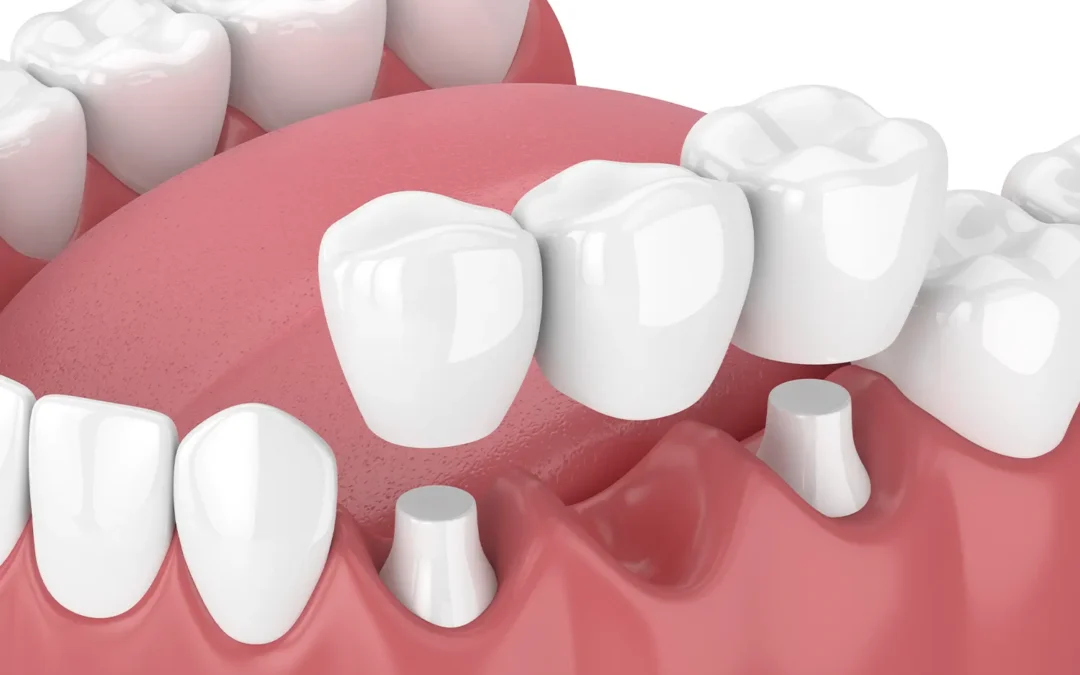Dental bridges play a crucial role in restoring the function and aesthetics of your smile by replacing missing teeth. Understanding how these dental marvels are attached can help you appreciate the intricate work involved and the benefits they offer.
Whether you’re considering a dental bridge or just curious about the process, this guide will walk you through how dental bridges are securely attached to give you a seamless and confident smile.
The Basics of Dental Bridges
Dental bridges are fixed prosthetic devices used to replace one or more missing teeth by literally “bridging” the gap. They are anchored in place using your existing teeth. Here are the key components involved in a dental bridge:
- Abutment Teeth: These are the natural teeth on either side of the gap that provide support for the bridge.
- Pontics: These are the false teeth that fill the gap and are attached to the abutment teeth.
- Materials: Bridges are typically made from tooth-colored porcelain, though some types may also incorporate metal components.
By understanding these components, you can better appreciate how dental bridges work to restore your smile.
Preparation and Fitting Process
The process of attaching a dental bridge typically involves multiple visits to your dentist. Initially, the abutment teeth are prepared by reshaping them to accommodate the crowns that will hold the bridge in place. During this step, impressions of your teeth are taken to fabricate a custom bridge that fits perfectly. While waiting for the permanent bridge, a temporary one is usually placed to protect the exposed teeth and gums.
Once the custom bridge is ready, it is cemented onto the abutment teeth. The dentist will ensure that the bridge fits correctly and comfortably, making any necessary adjustments to ensure a perfect bite. This meticulous process ensures that the bridge will function properly and last for many years.
Types of Dental Bridges
There are several types of dental bridges, each suited to different situations and patient needs:
- Traditional Bridges: These are the most common type, involving crowns on either side of the pontic.
- Cantilever Bridges: This type of bridge needs only one abutment tooth, and is used when there are adjacent teeth on only one side of the missing tooth.
- Maryland Bonded Bridges: Typically only used for front teeth, these bridges use a porcelain or metal framework with thin “wings” that are bonded to the backs of the abutment teeth.
- Implant-Supported Bridges: This type of bridge uses dental implants instead of abutment teeth, providing a stable and long-lasting solution for patients who have lost a row of several teeth.
Each type has its advantages and is selected based on the specific needs and conditions of the patient.
Benefits of Dental Bridges
Dental bridges offer numerous benefits beyond just filling the gap left by missing teeth. They help restore your ability to chew and speak properly, maintain the shape of your face, and prevent remaining teeth from drifting out of position. Additionally, bridges can improve your smile’s appearance and boost your self-confidence.
By choosing a dental bridge, you are investing in the long-term health and aesthetics of your mouth. With proper care and regular dental visits, bridges can last many years, making them a great long-term investment in your oral health.
Contact Caldera Dental Group in Redmond, OR
If you’re considering a dental bridge or have questions about your dental health, Dr. Christopher Primley and the team at Caldera Dental Group are here to help. Located in Redmond, OR, we are dedicated to providing personalized and comprehensive dental care to meet your needs. Call us today at (541) 548-3896 to schedule an appointment and take the first step toward restoring your smile with confidence.
